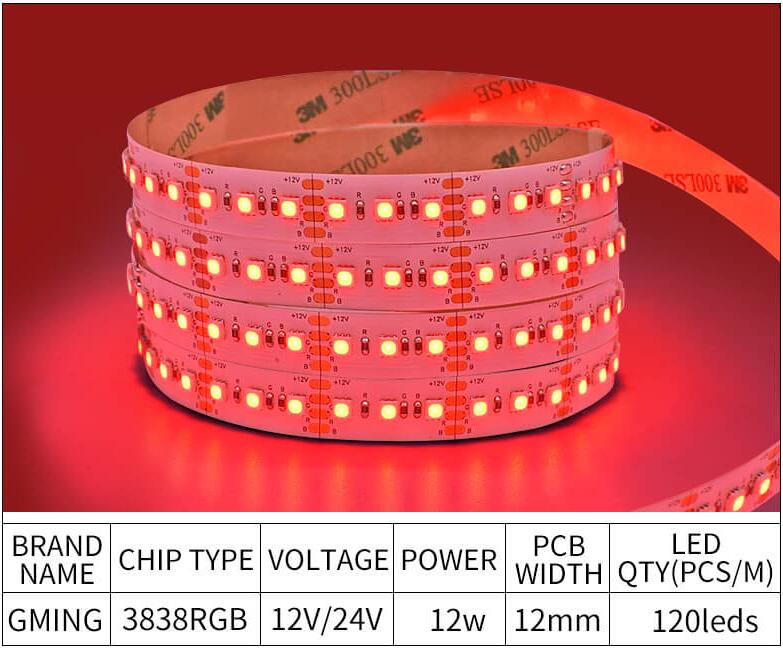RGB LED strip lights have become a go-to solution for a wide range of lighting applications—from architectural features and commercial displays to interior design and signage. However, choosing the best RGB LED strips involves more than just picking the brightest option or the most colorful effects. For long-term projects, the selection must be based on technical specifications, reliability, and system compatibility.
1. Uniform Light Output and LED Density
Light quality is a top priority in professional environments. RGB LED strips with a high LED density (such as 120 LEDs per meter) provide smooth, consistent illumination without visible light gaps. This is particularly important in installations where the strip is directly visible or reflected—such as under cabinet lighting, ceiling coves, or display shelves.
High-performance strips typically use compact and thermally efficient chips like 3838 SMD, which offer strong brightness, accurate color mixing, and long operational life.
For smooth color transitions and reduced flicker, ensure the strip supports high PWM frequency and is paired with a stable controller.
2. Voltage Configuration: 12V vs. 24V
Voltage selection impacts both system efficiency and installation scalability.
12V RGB LED strips are commonly used for small projects and shorter runs.
24V RGB LED strip lights, however, offer advantages for larger, commercial-scale applications:
Lower voltage drop across long runs
Fewer injection points required
Cleaner wiring and improved current stability
In high-demand environments like retail walls or hospitality lighting, 24V solutions provide greater flexibility and long-term performance with less technical complexity.
3. Environmental Protection: Choose the Right IP Rating
Depending on the installation site, RGB strips may need protection against water, dust, and UV exposure.
IP20: Suitable for dry, indoor conditions
IP65/IP67: Recommended for kitchens, bathrooms, or outdoor settings
Waterproof RGB LED strip lights are typically encapsulated in silicone or PU, offering protection without degrading flexibility or color clarity. For outdoor signage or building facades, always select products with UV-resistant coatings and weatherproof connectors.
4. Control Compatibility and Integration Options
Modern RGB lighting projects often require integration into smart systems or centralized controls. The best strips support multiple control protocols:
RF or IR remotes for simple setups
WiFi/Bluetooth for mobile app control
DMX or DALI for stage lighting and building automation
If your project has specific wiring layouts, voltage needs, or control system requirements, consider sourcing custom RGB LED strip lighting solutions for commercial applications to ensure seamless integration and consistent performance.
5. Build Quality, Certification, and Supplier Support
A high-quality strip isn’t just about light output. Key indicators of a professional-grade product include:
Double-layer PCB with at least 2 oz copper for better heat management
LM-80 test reports and photometric data available
CE, RoHS, UL, or FCC certifications to meet compliance needs
Reliable suppliers also offer consistent batch production, technical documentation, and tailored support, which are crucial when managing procurement at scale.
The best RGB LED strips balance light quality, durability, voltage efficiency, and control flexibility. Whether you're outfitting a retail space, outdoor display, or integrated lighting system, carefully evaluating these technical factors will help you make an informed and cost-effective choice.